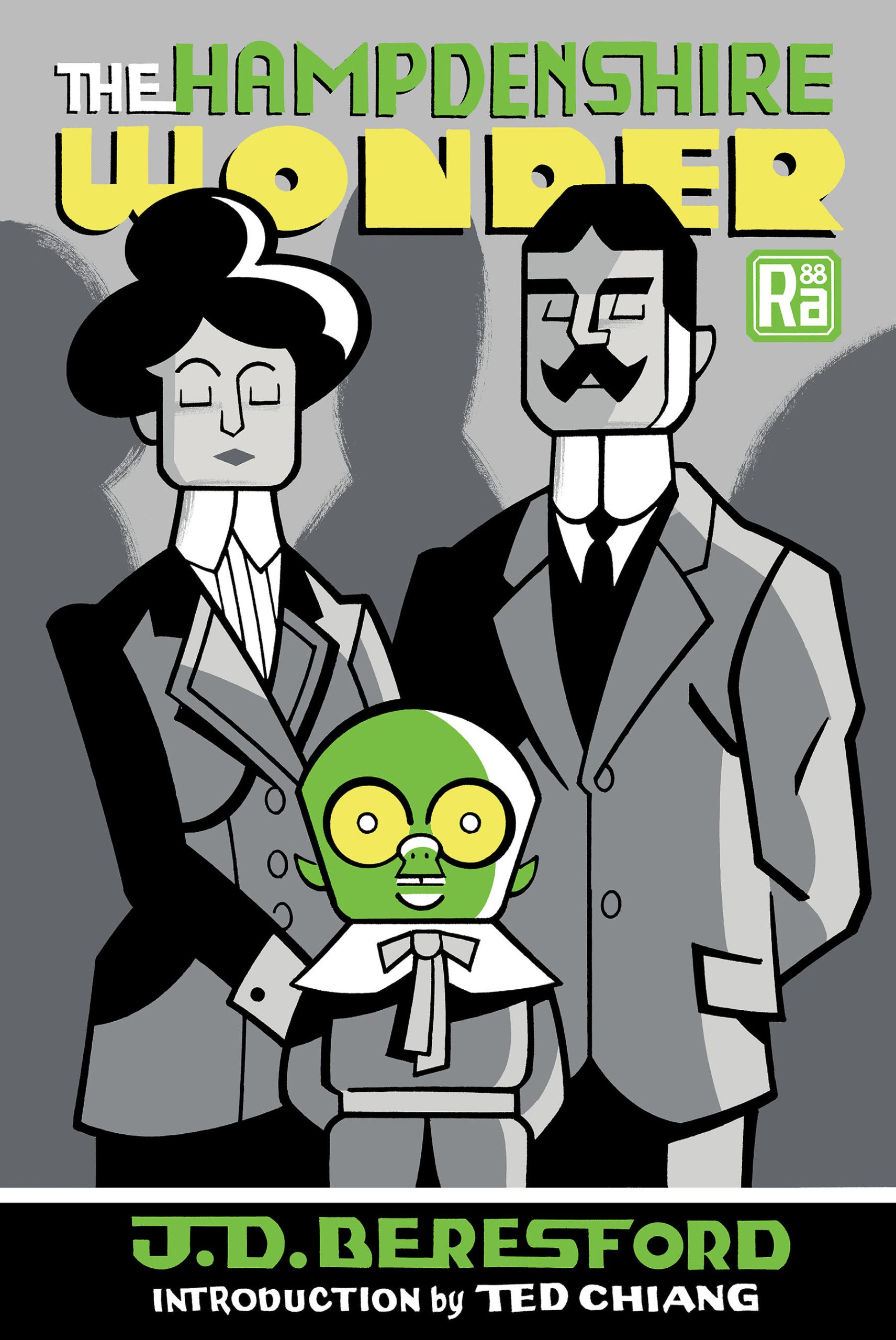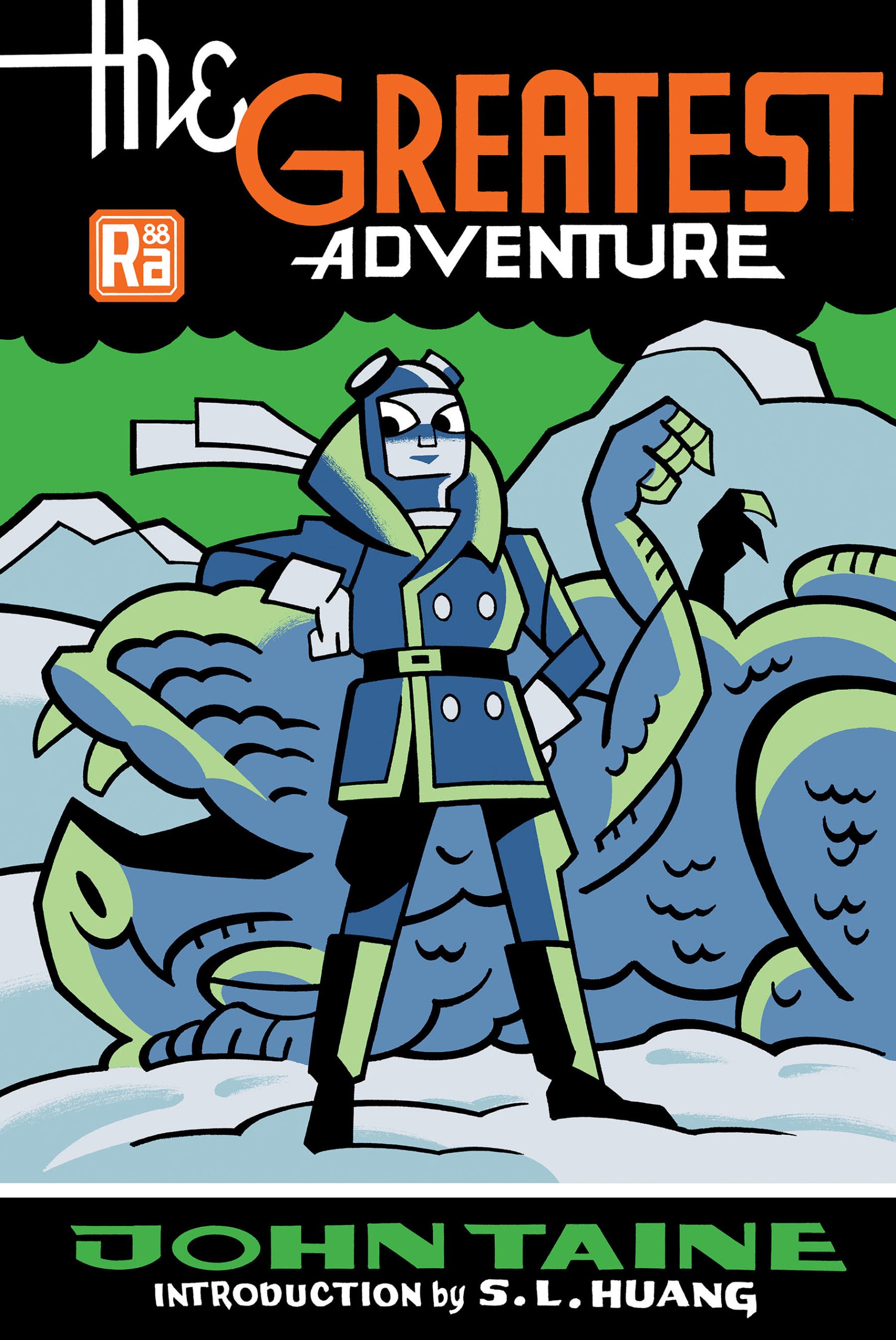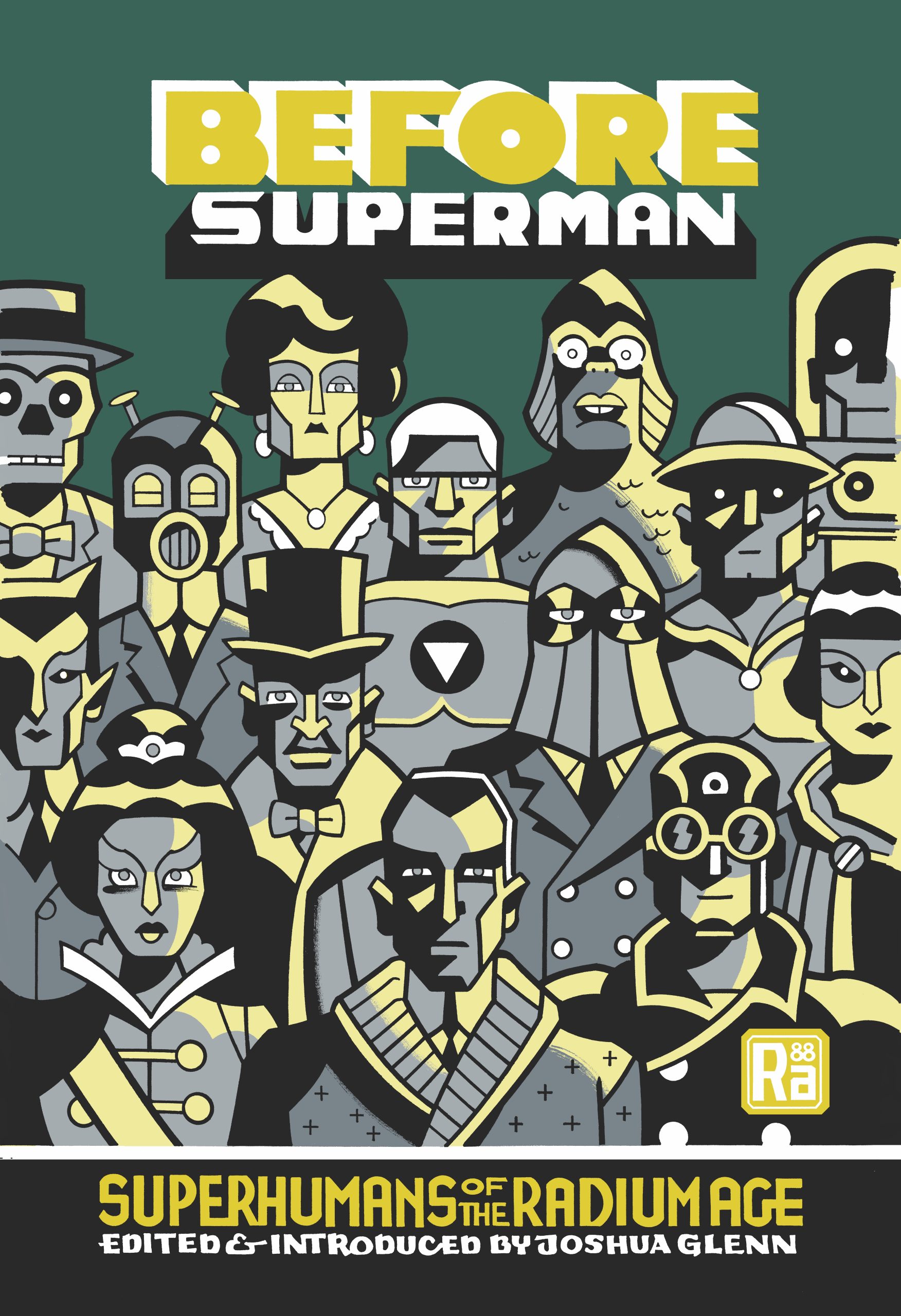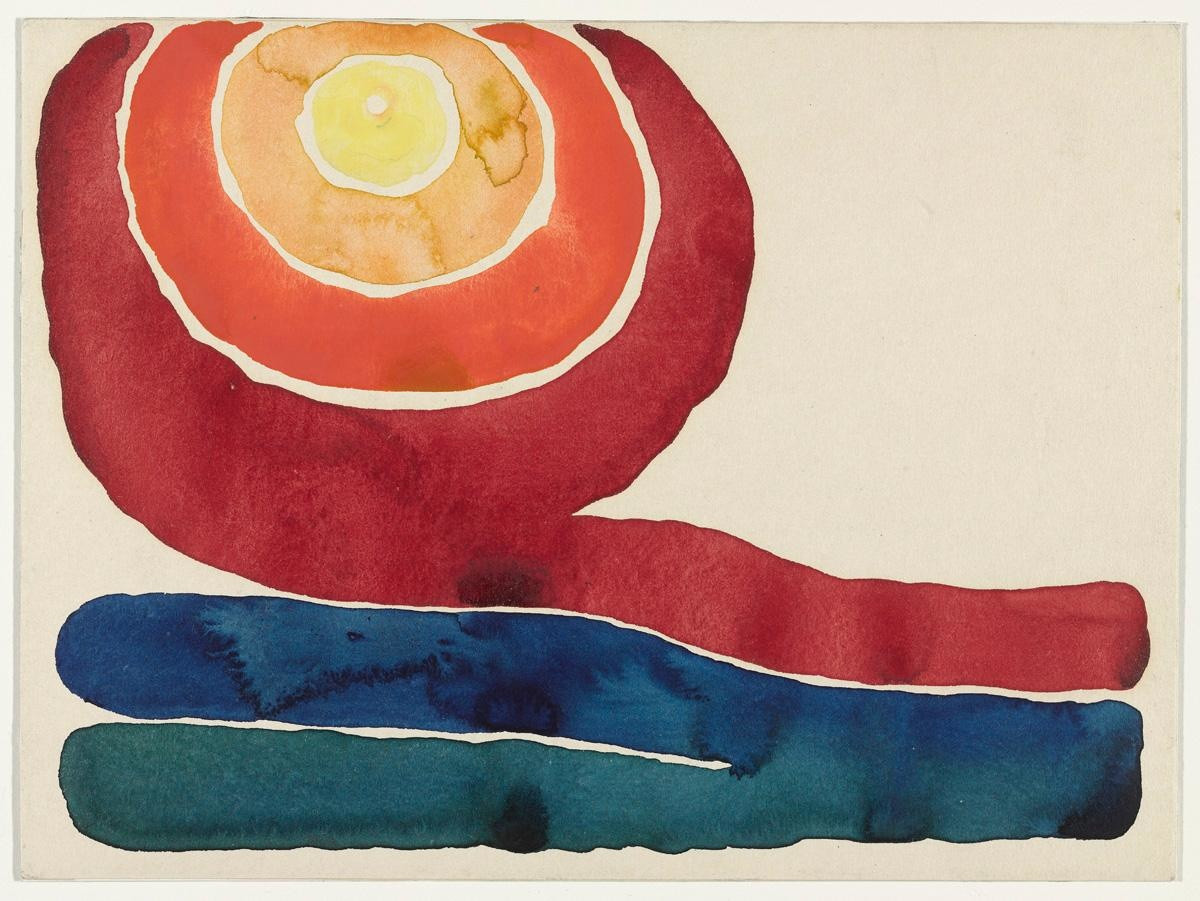RADIUM AGE 1Q2025
By:
March 28, 2025

Under the direction of HILOBROW’s Josh Glenn, in 2022 the MIT Press launched its RADIUM AGE series of proto-sf reissues from 1900–1935.
In these forgotten classics, sf readers will discover the origins of enduring tropes like robots (berserk or benevolent), tyrannical supermen, dystopias and apocalypses, sinister telepaths, and eco-catastrophes. With new contributions by historians, science journalists, and sf authors, the RADIUM AGE book series recontextualizes the breakthroughs and biases of these proto-sf pioneers, and charts the emergence of a burgeoning literary genre.
RADIUM AGE SERIES UPDATES: 2022 | 2023 | 2024 | 1Q2025 | 2Q2025 | 3Q2025 | 4Q2025. FULL SERIES INFO.
Below, please find updates on the RADIUM AGE project from 1Q2025.
During 1Q2025, the RADIUM AGE series published the following titles.
J.D. BERESFORD
Introduction by TED CHIANG
(March 4, 2025)

In this pioneering science-fictional treatment of superhuman intelligence, a mutant wonder child’s insights prove devastating.
Science fiction luminary Ted Chiang introduces The Hampdenshire Wonder, one of the genre’s first treatments of superhuman intelligence. Victor Stott is a large-headed “supernormal” mutated in the womb by his parents’ desire to have a child born without habits. Unable to deal with the child’s disenchanting insights, his adult interlocutors seek to silence him… perhaps permanently.
“In The Hampdenshire Wonder Beresford explores anxieties about human evolution and the limits of knowledge. Is Victor Stott our evolutionary successor or simply a vulnerable boy in a provincial town? A threat or a victim?” — John Kessel
“Extravagance… but of so remarkable a character that it keeps you almost spell-bound. What follows is philosophy, psychology, poetry, allegory, what you will.” — The Bookman (1911)
“A novel which, in point of originality, both of conception and execution, is the most remarkable that has been published for some time. A wonderful effort of vision and imagination. It is a book that counts.” — Morning Post (1911)
“Mr. Beresford reveals himself as a man who has something to say very distinct and different from the ordinary rut of novelists, something that amounts almost to a message.” — English Review
“A clever and curious book.” — The Book Monthly (1911)
“A thoughtful and original novel.” — The Athenaeum (1911)
“The striking originality of the book is what first catches the reader’s attention; afterwards it is held by the quiet, truth-compelling manner of the telling.” — Pall Mall Gazette (1911)
“Mr. Beresford has done a very difficult thing extremely well. He has written a story which anyone can read with pleasure, and in which the philosophic reader will find a rich vein of meaning and suggestion.” — Westminster Gazette (1911)
Press for MITP’s edition of The Hampdenshire Wonder includes the following…
“However you interpret Beresford’s touching short novel, it remains, like its protagonist, a wonder.” — The Washington Post
“What makes the Radium Age series so valuable is how it illuminates the origins of science fiction tropes we take for granted. The Hampdenshire Wonder tackles transhumanism decades before it became a preoccupation of science fiction and posthumanist philosophy.” — Mark Frauenfelder, Boing Boing
“One of the earliest exemplars in SF of the genius unbound, the more-than-human intellect whose insights are sublime and terrible. […] The Hampdenshire Wonder has more than just historical value, and earns this latest reprint.” — Niall Harrison, Locus
“The great Ted Chiang contributed a new introduction to this edition of J. D. Beresford’s novel The Hampdenshire Wonder. It’s about a superhuman child whose observations of — and detachment from — the rest of humanity lead to alarm and the collapse of his family.” — Reactor
Ted Chiang’s introduction to The Hampdenshire Wonder was published by Literary Hub. Excerpt: “Not only does Victor Stott frighten the ignorant and superstitious, he induces a profound terror in the educated and intellectual. Seen in this light, the first novel about superintelligence is actually a work of horror SF, a cautionary tale about the dangers of knowing too much.”
J.D. BERESFORD (1873–1947) was an English dramatist, journalist, and author. A great admirer of H.G. Wells, he published the first critical study of Wells’s scientific romances in 1915. In addition to The Hampdenshire Wonder (1911), an early and influential proto-sf novel about super-intelligence, his genre novels include A World of Women (1913), Revolution (1921), and The Riddle of the Tower (1944, with Esmé Wynne-Tyson).
TED CHIANG‘s fiction has won four Hugo, four Nebula, and six Locus Awards, and has been reprinted in Best American Short Stories. His first collection Stories of Your Life and Others has been translated into twenty-one languages, and the title story was the basis for the Oscar-nominated film Arrival. His second collection Exhalation was chosen by The New York Times as one of the 10 Best Books of 2019.
Originally published in 1911. Cover illustrated and designed by Seth. See this book at The MIT Press.
JOHN TAINE
Introduction by S.L. HUANG
(March 4, 2025)

Intrepid aviatrix Edith Lane and her explorer companions discover remnants of an elder race… in Antarctica! Can they set things right before mutated life-forms, both animal and vegetal, run amok and threaten the planet? The Greatest Adventure is a tale of horror by John Taine — the pseudonym of mathematician Eric Temple Bell — that is not without moments of humor.
“The Greatest Adventure is both a rousing adventure and a pioneering work of environmental fiction reflecting concerns over extractivism, the role of science in warfare, and the future of scientific inquiry.” — Siobhan Maria Carroll
“Anyone who has enjoyed [Arthur Conan Doyle’s Lost World] will be amply rewarded by reading Taine’s The Greatest Adventure. Mr. Taine’s splendid imagination has given us quite a number of wonderful books.” — Amazing Stories (September 1929)
“A mixture of H. Rider Haggard, Conan Doyle, Roy Chapman Andrews, and a bottle of excellent gin.” — California Tech (1929)
“Generally considered one of John Taine’s better novels. Because of the strong theme and Taine’s known worrying about genetic engineering, perhaps intended as a cautionary tale as well as an adventure.” — Everett F. Bleiler, Science-Fiction: The Early Years.
Press for MITP’s edition of The Greatest Adventure includes the following…
“What makes the Radium Age series so valuable is how it illuminates the origins of science fiction tropes we take for granted. The Greatest Adventure reveals the literary DNA of Lovecraft’s cosmic horror.” — Mark Frauenfelder, Boing Boing
“When mathematician Eric Temple Bell wasn’t writing nonfiction under his given name, he was exploring the world of science fiction under the pseudonym of John Taine. A new edition of Taine’s novel The Greatest Adventure revisits this tale of genetic engineering gone overboard in Antarctica; S.L. Huang wrote the introduction.” — Reactor
ERIC TEMPLE BELL (1883–1960) was a mathematician who taught at the California Institute of Technology. The eponym of Bell polynomials and Bell numbers of combinatorics, his 1937 book Men of Mathematics would help to inspire Julia Robinson, John Forbes Nash Jr., Andrew Wiles, and other future mathematicians. Writing as “John Taine,” he published many proto-sf novels, several of which — including 1929’s The Greatest Adventure — involve scientifically precipitated, yet out-of-control evolution.
S.L. HUANG is a Hugo-winning, bestselling author who justifies an MIT degree by using it to write eccentric mathematical superhero fiction. Huang is the author of the Cas Russell novels from Tor Books, including Zero Sum Game, Null Set, and Critical Point, as well as the new fantasies Burning Roses and The Water Outlaws. Huang’s stories have appeared in Analog, F&SF, Nature, and elsewhere. Huang is also a Hollywood stunt performer and firearms expert, with credits including Battlestar Galactica and Top Shot.
Originally published in 1929. Cover illustrated and designed by Seth. See this book at The MIT Press.

During 1Q2025, Josh worked with the MITP editorial team to proof our Fall 2025 titles: Marietta S. Shaginyan’s Yankees in Petrograd (translated and introduced by Jill Roese); and Before Superman: Superhumans of the Radium Age (anthology edited and introduced by Josh Glenn).
More info on these titles, along with Seth’s cover illustrations, can be found here.
On behalf of Radium Age series contributors new and old, Josh also proposed two more titles to the MITP editorial board: a translation from the original Portuguese, and a story/excerpt anthology.
Here at HILOBROW, during 1Q2025 Josh continued to share his Radium Age-related research. For example…

HILOBROW published further installments in the series RADIUM AGE POETRY. Here’s a sampling of the 1Q2025 lineup:
Valery Bryusov’s THE VOICE OF OTHER WORLDS | Olaf Stapledon’s “IF MAN ENCOUNTER…” | Frederick Soddy’s THE KISS PRECISE | Harriet Monroe’s A POWER-PLANT | Waring Cuney’s DUST | Agnes Lee’s RADIUM.
To see the full RADIUM AGE POETRY lineup, organized thematically, visit this page.

Here at HILOBROW, as we have been doing for a decade now, during 1Q2025 we serialized some of Josh’s favorite Radium Age proto-sf stories and novels. Here’s the lineup:
- Joseph Conrad and Ford Madox Ford’s The Inheritors (1901)
- Naomi Mitchison’s “The Goat: Cardiff, A.D. 1935” (1929)
- Frank L. Pollock’s “The Skyscraper in B Flat” (1904)
Here’s a sampling of 1Q2025 series publicity:
- On February 1, The Inhumans was longlisted for the British Science Fiction Awards’ Best Collection award. #BSFAAwards2024
- Also on February 1, the annual Locus Recommended Reading List was announced. The Inhumans was included on the ANTHOLOGIES / REPRINT list.
- The March 2025 issue of Locus included Niall Harrison’s review of the MIT Press’s edition of The Hampdenshire Wonder. “One of the earliest exemplars in SF of the genius unbound, the more-than-human intellect whose insights are sublime and terrible. The Wonder, as the child is primarily known, devours entire libraries of philosophy and science, eventually expounding a theory-of-everything that (of course) cannot be recreated on the page, but implies what [Ted] Chiang calls (brilliantly) in his introduction a kind of “cognitive heat death,” a point beyond which learning, and perhaps therefore living, becomes irrelevant. The heightened passages grappling with this possibility convey, without any particular pyrotechnics, the proper scientific romance chill of perspective, which is to say that The Hampdenshire Wonder has more than just historical value, and earns this latest reprint.”
- In March, Reactor included the MIT Press’s edition of The Hampdenshire Wonder in its Can’t Miss Indie Press Speculative Fiction for March and April 2025 round-up. “The great Ted Chiang contributed a new introduction to this edition of J. D. Beresford’s novel The Hampdenshire Wonder. It’s about a superhuman child whose observations of — and detachment from — the rest of humanity lead to alarm and the collapse of his family.”
- In March, Ted Chiang’s introduction to The Hampdenshire Wonder was published by Literary Hub. Excerpt: “Not only does Victor Stott frighten the ignorant and superstitious, he induces a profound terror in the educated and intellectual. Seen in this light, the first novel about superintelligence is actually a work of horror SF, a cautionary tale about the dangers of knowing too much.”
- In March, Reactor included the MIT Press’s edition of The Greatest Adventure in its Can’t Miss Indie Press Speculative Fiction for March and April 2025 round-up. “When mathematician Eric Temple Bell wasn’t writing nonfiction under his given name, he was exploring the world of science fiction under the pseudonym of John Taine. A new edition of Taine’s novel The Greatest Adventure revisits this tale of genetic engineering gone overboard in Antarctica; S.L. Huang wrote the introduction.”
MORE RADIUM AGE SCI FI ON HILOBROW: RADIUM AGE SERIES from THE MIT PRESS: In-depth info on each book in the series; a sneak peek at what’s coming in the months ahead; the secret identity of the series’ advisory panel; and more. | RADIUM AGE: TIMELINE: Notes on proto-sf publications and related events from 1900–1935. | RADIUM AGE POETRY: Proto-sf and science-related poetry from 1900–1935. | RADIUM AGE 100: A list (now somewhat outdated) of Josh’s 100 favorite proto-sf novels from the genre’s emergent Radium Age | SISTERS OF THE RADIUM AGE: A resource compiled by Lisa Yaszek.
